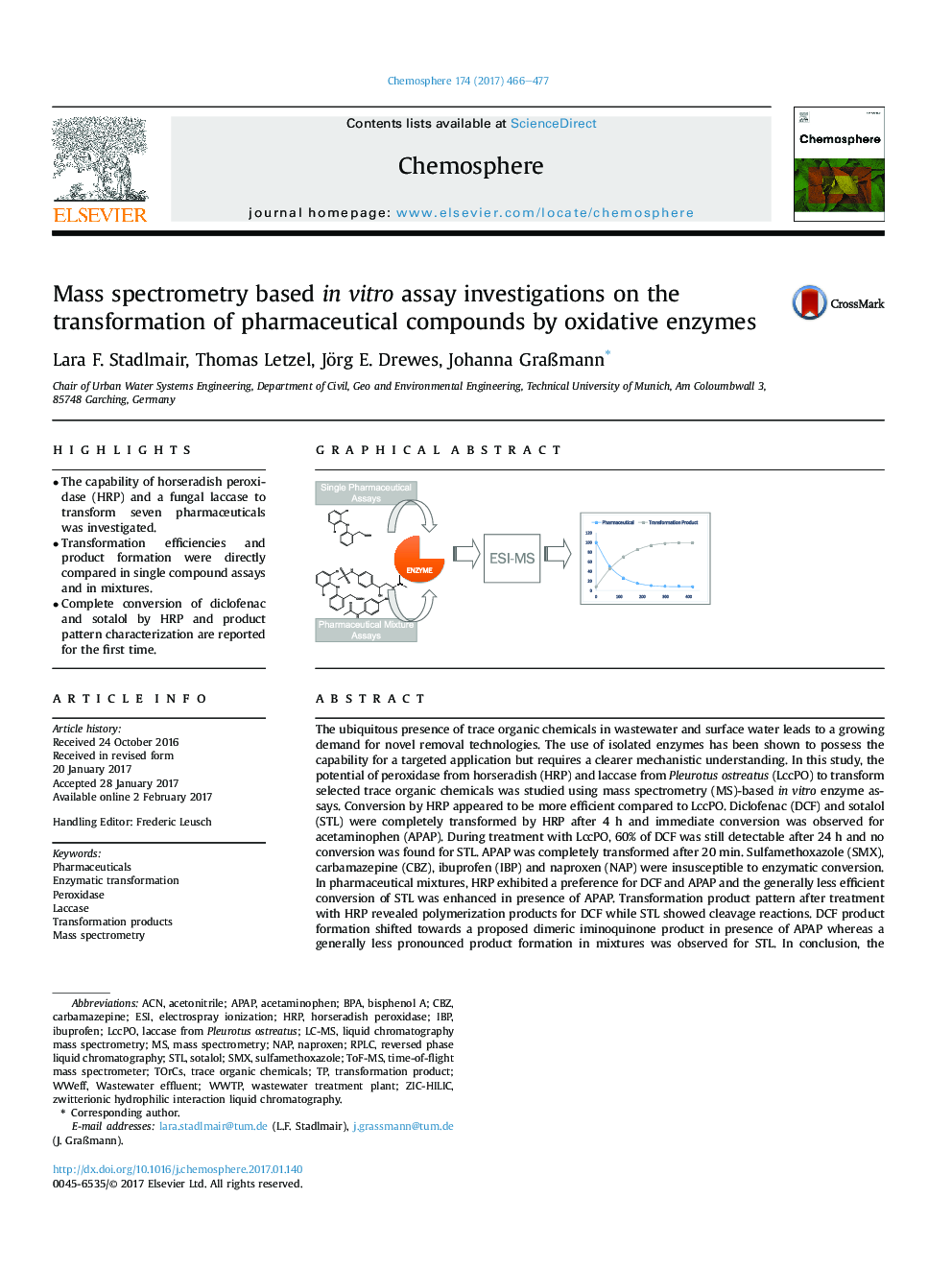| Article ID | Journal | Published Year | Pages | File Type |
|---|---|---|---|---|
| 5747356 | Chemosphere | 2017 | 12 Pages |
â¢The capability of horseradish peroxidase (HRP) and a fungal laccase to transform seven pharmaceuticals was investigated.â¢Transformation efficiencies and product formation were directly compared in single compound assays and in mixtures.â¢Complete conversion of diclofenac and sotalol by HRP and product pattern characterization are reported for the first time.
The ubiquitous presence of trace organic chemicals in wastewater and surface water leads to a growing demand for novel removal technologies. The use of isolated enzymes has been shown to possess the capability for a targeted application but requires a clearer mechanistic understanding. In this study, the potential of peroxidase from horseradish (HRP) and laccase from Pleurotus ostreatus (LccPO) to transform selected trace organic chemicals was studied using mass spectrometry (MS)-based in vitro enzyme assays. Conversion by HRP appeared to be more efficient compared to LccPO. Diclofenac (DCF) and sotalol (STL) were completely transformed by HRP after 4 h and immediate conversion was observed for acetaminophen (APAP). During treatment with LccPO, 60% of DCF was still detectable after 24 h and no conversion was found for STL. APAP was completely transformed after 20 min. Sulfamethoxazole (SMX), carbamazepine (CBZ), ibuprofen (IBP) and naproxen (NAP) were insusceptible to enzymatic conversion. In pharmaceutical mixtures, HRP exhibited a preference for DCF and APAP and the generally less efficient conversion of STL was enhanced in presence of APAP. Transformation product pattern after treatment with HRP revealed polymerization products for DCF while STL showed cleavage reactions. DCF product formation shifted towards a proposed dimeric iminoquinone product in presence of APAP whereas a generally less pronounced product formation in mixtures was observed for STL. In conclusion, the enzymatic treatment approach worked selectively and efficiently for a few pharmaceuticals. However, for application the investigation and possibly immobilization of multiplex enzymes being able to transform diverse chemical structures is recommended.
Graphical abstractDownload high-res image (153KB)Download full-size image
